 "ttyymmnn" (ttyymmnn)
"ttyymmnn" (ttyymmnn)
06/24/2016 at 12:35 • Filed to: Planelopnik, planelopnik history
 5
5
 13
13
 "ttyymmnn" (ttyymmnn)
"ttyymmnn" (ttyymmnn)
06/24/2016 at 12:35 • Filed to: Planelopnik, planelopnik history |  5 5
|  13 13 |
Welcome to This Date in Aviation History , getting of you caught up on milestones, important historical events and people in aviation from June 22 - June 24.
!!! UNKNOWN CONTENT TYPE !!!
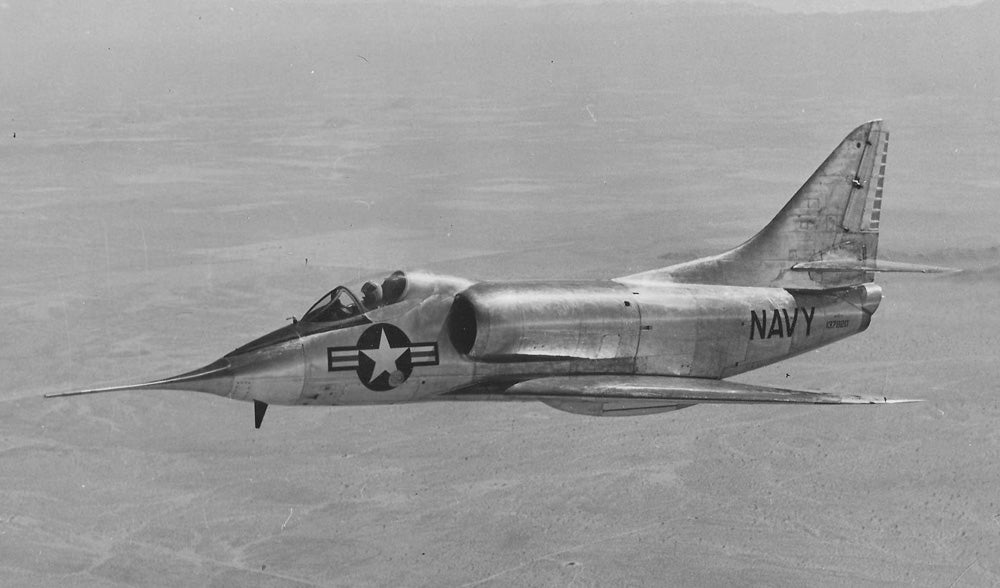
June 22, 1954 – The first flight of the Douglas A-4 Skyhawk. The 1950s was a period of transition for military aviation, as new jet-powered aircraft began to take the place of older, propeller-driven aircraft in large numbers. Douglas had already provided the US Navy and Marine Corps with a remarkable piston-engine attack plane, the !!!error: Indecipherable SUB-paragraph formatting!!! . Best known as a hard-hitting and rugged ground attack aircraft, the AD-4B variant was capable of carrying nuclear weapons, but the Navy requested a jet-powered aircraft to take its place. Bucking the trend towards larger and larger aircraft, Douglas engineer !!!error: Indecipherable SUB-paragraph formatting!!! designed a diminutive, delta-wing fighter powered by a single jet engine. In fact, the A-4 was so small that its wings did not need to be folded for carrier storage, and the final aircraft weighed half of what the Navy specified for the new airplane, even less than the Skyraider it replaced. But with a powerful jet engine in such a small airframe, the Skyhawk was a favorite among its pilots for its speed and performance, earning it the nicknames Heinemann’s Hot Rod , Bantam Bomber , Mighty Mite and Scooter . The first A-4s were powered by a !!!error: Indecipherable SUB-paragraph formatting!!! , but starting with the A-4E, Douglas moved to a !!!error: Indecipherable SUB-paragraph formatting!!! turbojet that gave the little fighter a top speed of 670 mph. And though it was small, the Skyhawk packed a heavy punch. In addition to its two 20mm cannons, the A-4 could carry nearly 10,000 pounds of external bombs, a greater bomb load than a WWII-era !!!error: Indecipherable SUB-paragraph formatting!!! . The Skyhawk also pioneered the concept of “buddy refueling,” where one aircraft could refuel another of the same type in flight, removing the need for dedicated tanker aircraft. Following delivery to the Navy and Marine Corps in 1956, the A-4 first saw combat with the US Navy during the Vietnam War, launching its first air raids on North Vietnam in August 1964. Skyhawks also found distinction with the Israeli Air Force in the !!!error: Indecipherable SUB-paragraph formatting!!! and with the Argentine Air Force during the !!!error: Indecipherable SUB-paragraph formatting!!! . Other international customers included Kuwait, Australia, New Zealand, Indonesia, Malaysia, and Brazil. After the Skyhawk was retired from US Navy fleet duty, it found a new lease on life as an adversary aircraft at the Navy’s !!!error: Indecipherable SUB-paragraph formatting!!! (commonly called Top Gun). The A-4 was chosen as the aggressor aircraft because of its small size, maneuverability and smokeless trail, similar to a !!!error: Indecipherable SUB-paragraph formatting!!! . It served in this aggressor role until 1999. In 1974, the the Navy’s !!!error: Indecipherable SUB-paragraph formatting!!! demonstration squadron chose the Skyhawk as their new demonstration aircraft when they transitioned from the !!!error: Indecipherable SUB-paragraph formatting!!! , a plane that was much larger and more costly to operate. The smaller and lighter aircraft, with a tighter turning radius, allowed for a more dynamic flight demonstration, and the Blues flew the Skyhawk until 1986. The A-4 had a remarkable production run of 25 years, and Douglas turned out nearly 3,000 aircraft. The US Navy retired the last of its operational A-4s in 2003, but it served with the Israeli Air Force until 2015, and still remains in service in some countries. (US Navy photo)
!!! UNKNOWN CONTENT TYPE !!!
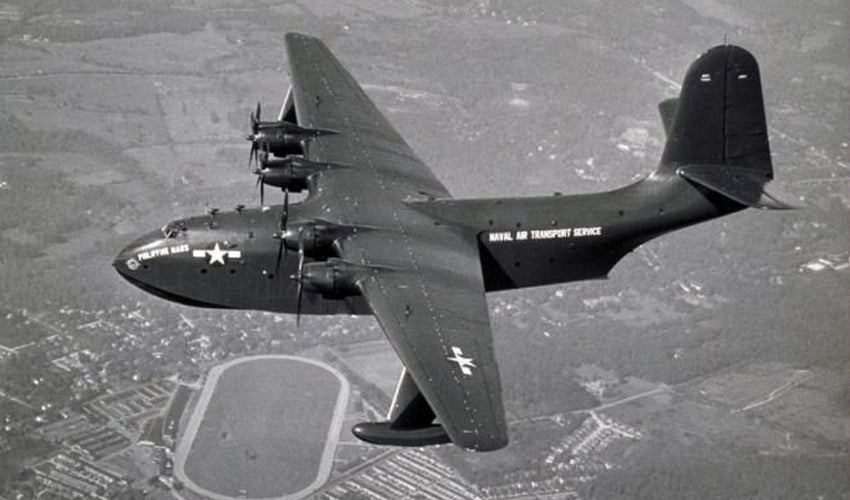
June 23, 1942 – The first flight of the Martin JRM Mars. Today, huge, modern airliners operate from airports the world over, but in the earlier days of aviation, particularly the Golden Age of the 1930s, the world’s largest operational aircraft were flying boats. With 71-percent of the Earth’s surface covered by oceans, flying boats became the preferred way to transport large numbers of people and cargo. But by WWII, the large flying boat was being supplanted by larger land-based planes, and the age of the flying boat reached its zenith with the huge Martin JRM Mars, the largest flying boat produced for the Allies during the war. The Mars was originally conceived as a long-range ocean patrol bomber, and Martin based the Mars on their !!!error: Indecipherable SUB-paragraph formatting!!! , a large two-engined flying boat patrol bomber that first flew in 1939. For the Mars, Martin used a total of four more powerful !!!error: Indecipherable SUB-paragraph formatting!!! 18-cylinder radial engines, and then scaled up the Mariner by 82 feet to its wingspan and 38 feet to its length, giving the Mars a wingspan of 200 feet. Though the Mars was conceived as a bomber, by the time it was ready for US Navy service the role of the maritime bomber was no longer needed, and the Navy ordered 20 aircraft to be converted as a strategic transport and cargo aircraft. In that role, cavernous fuselage could accommodate 133 troops, 84 patients along with 25 medical attendants, or up to 32,000 pounds of cargo. With a cruising speed of 221 mph, the Mars had an unrefueled range of nearly 5,000 miles. The first aircraft weren’t delivered until June 1945 and, with the end of the war in sight, the Navy cut their original order of 20 aircraft to just the 5 that were under construction at the time. The first pre-production aircraft, named Hawaii Mars , was lost in a crash in the Chesapeake Bay, leaving a total of only 5, all named after Pacific Ocean locales from the war: the Marianas Mars , Philippine Mars , Marshall Mars , Caroline Mars , and a second Hawaii Mars . The Navy used the aircraft to fly cargo from the US to Hawaii and other islands in the Pacific, and the Caroline Mars , which had been upgraded with more powerful !!!error: Indecipherable SUB-paragraph formatting!!! 28-cylinder engines, set a world record for passenger load in 1950 when it carried 269 passengers from San Diego to Alameda. During the development of the Mars, engine fires had been a problem, and the Marshall Mars was lost in 1950 following an engine fire that destroyed the plane. There were now only 4 Mars left. By 1959, the Navy was done with the giant flying boats, and they were going to sell them for scrap. However, the giant planes got a new lease on life when they were purchased by a consortium of Canadian foresters to be converted to firefighting water bombers. Water tanks and pick up scoops were added which allowed 30 tons of water to be taken onboard on just 22 seconds. But fate kept chipping away at the Mars, and the Marianas Mars was lost in a fatal crash in 1961, and the Caroline Mars fell victim to !!!error: Indecipherable SUB-paragraph formatting!!! in 1962. That left just 2 aircraft. In 2012, the owners of the aircraft, !!!error: Indecipherable SUB-paragraph formatting!!! , announced that Philippine Mars would be retired, restored to US Navy livery, and flown to the National Naval Aviation Museum in Florida. The Hawaii Mars remains in firefighting service, though its use is limited. (US Navy photo)
!!! UNKNOWN CONTENT TYPE !!!
Short Take Off
!!! UNKNOWN CONTENT TYPE !!!
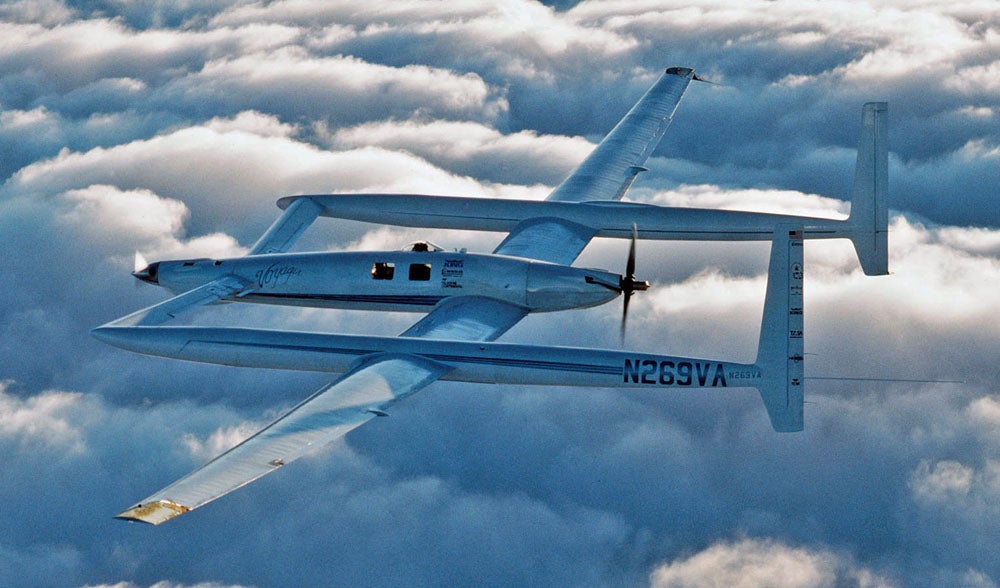
June 22, 1984 – The first flight of the Rutan Voyager, the first aircraft capable of flying around the world without refueling. The idea to build the world-spanning aircraft was initiated by pilots !!!error: Indecipherable SUB-paragraph formatting!!! and !!!error: Indecipherable SUB-paragraph formatting!!! , along with famed aeronautical engineer !!!error: Indecipherable SUB-paragraph formatting!!! , and the aircraft was built by Burt Rutan’s company !!!error: Indecipherable SUB-paragraph formatting!!! . The Voyager is constructed of fiberglass, carbon fiber and Kevlar, weighed just 939 pounds empty, and was powered by a pair of !!!error: Indecipherable SUB-paragraph formatting!!! engines in a push-pull configuration. Yeager and Dick Rutan departed from Edwards Air Force Base in California on December 14, 1986 and completed the circumnavigation on December 23, flying 26,366 miles and setting a flight endurance record of just over 9 days. The Voyager is now on display at the Smithsonian Air and Space Museum. (NASA photo)
!!! UNKNOWN CONTENT TYPE !!!
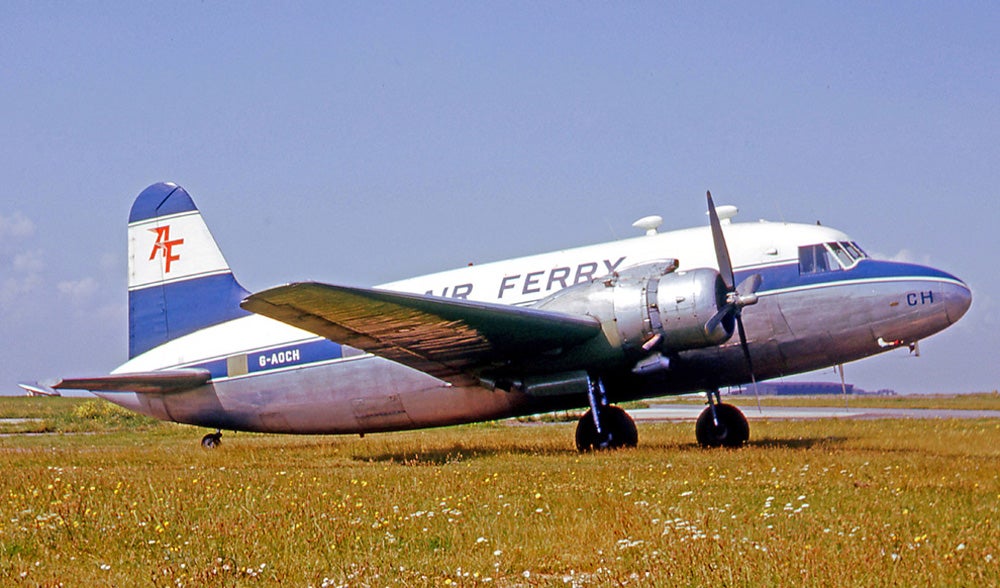
June 22, 1945 – The first flight of the Vickers VC.1 Viking, a twin-engine airliner developed from the !!!error: Indecipherable SUB-paragraph formatting!!! bomber. Following WWII, Britain worked to create a civilian airline service after focusing almost solely on military aircraft production during the war. The Viking used the wing and undercarriage of the Wellington, but the fuselage was entirely new and designed to carry 21 passengers. The airliner was introduced in 1946, and British European Airways operated the Viking for 8 years before it was replaced by more modern pressurized airliners. One Viking was modified by the addition of two !!!error: Indecipherable SUB-paragraph formatting!!! turbojets, becoming the world’s first purely jet-powered airliner when it flew in 1948. A total of 163 Vikings were built. (Photo by RuthAS via !!!error: Indecipherable SUB-paragraph formatting!!! )
!!! UNKNOWN CONTENT TYPE !!!
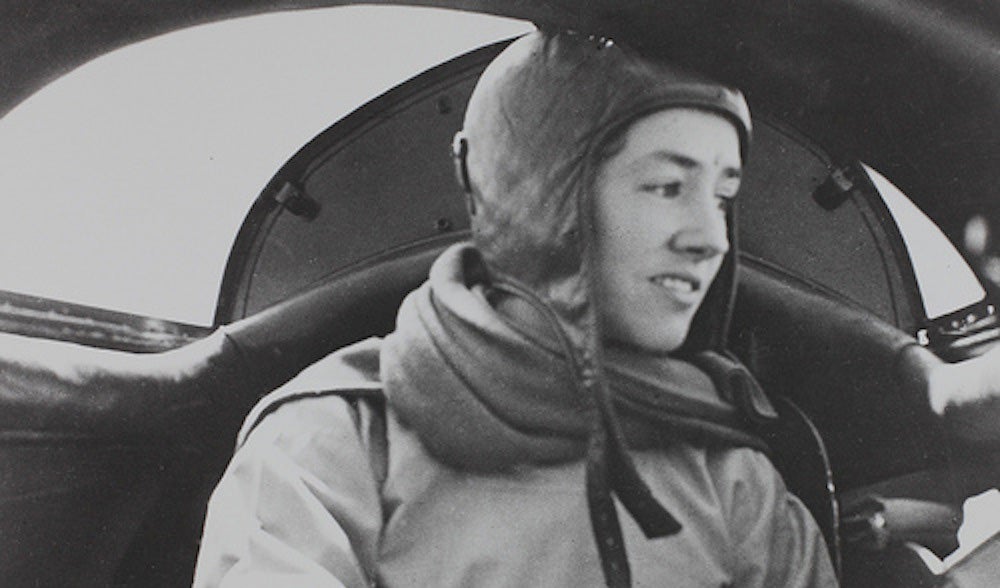
June 22, 1906 – The birth of Anne Morrow Lindbergh, the wife of famed aviator !!!error: Indecipherable SUB-paragraph formatting!!! and an accomplished aviator herself. She became the first American woman to earn a glider pilot’s license in 1930 and, with her husband, explored and charted intercontinental air routes, for which she was awarded the !!!error: Indecipherable SUB-paragraph formatting!!! by the National Geographic Society and the US Flag Association Cross of Honor. The trip covered 40,000 miles of flying and included visits to 5 continents. Lindbergh was inducted into the !!!error: Indecipherable SUB-paragraph formatting!!! in 1979, as well as the International Women in Aviation Pioneer Hall of Fame. She died in 2001 at the age of 94. (Photo via San Diego Air and Space Museum)
!!! UNKNOWN CONTENT TYPE !!!
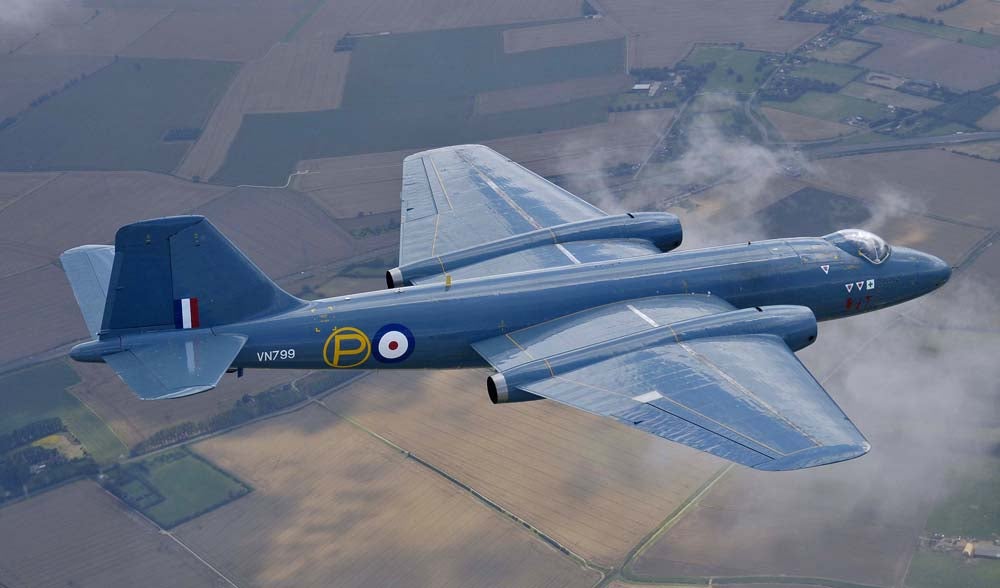
June 23, 2006 – The RAF retire the English Electric Canberra. Originally conceived as a jet-powered successor to the !!!error: Indecipherable SUB-paragraph formatting!!! , the Canberra was one of the most successful of the early jet bombers of the 1950s. It was capable of flying higher than most fighters when it was introduced, and was an important part of England’s early nuclear strike force. The Canberra proved to be remarkably adaptable to different missions, and its retirement marked the end of more than 50 years of RAF service. The Canberra was also built under license in the US as the !!!error: Indecipherable SUB-paragraph formatting!!! , and it became the first American jet-powered bomber to drop bombs in battle during the Korean War. Three of the Martin-built aircraft remain in service with NASA, carrying out high-altitude research. (UK MOD photo)
!!! UNKNOWN CONTENT TYPE !!!
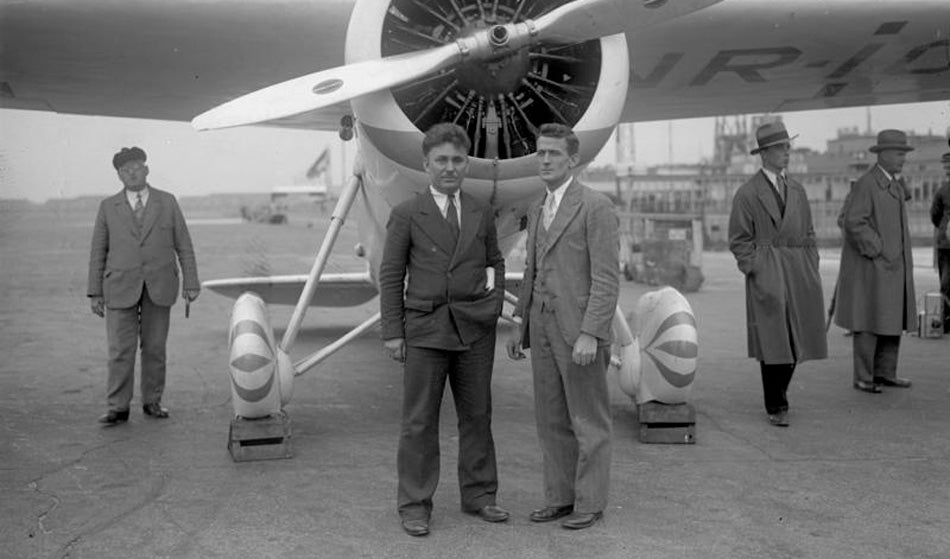
June 23, 1931 – Wiley Post and Harold Gatty take off on a flight around the world. While others had flown fixed wing aircraft around the world before, the record for the shortest flight was held by the airship !!!error: Indecipherable SUB-paragraph formatting!!! , which completed the journey in 1929 in 21 days. Wiley Post, with navigator Harold Gatty, departed from Roosevelt Field on Long Island flying a !!!error: Indecipherable SUB-paragraph formatting!!! named Winnie Mae and headed eastward. They completed the flight on July 1 after traveling 15,474 miles in a record time of 8.5 days. They were hailed as heroes in the US, and received a ticker tape parade in New York City. Post wrote a chronicle of their journey titled Around the World in Eight Days . (Photo of Post and Gatty in Germany via Deutsches Bundesarchiv)
!!! UNKNOWN CONTENT TYPE !!!
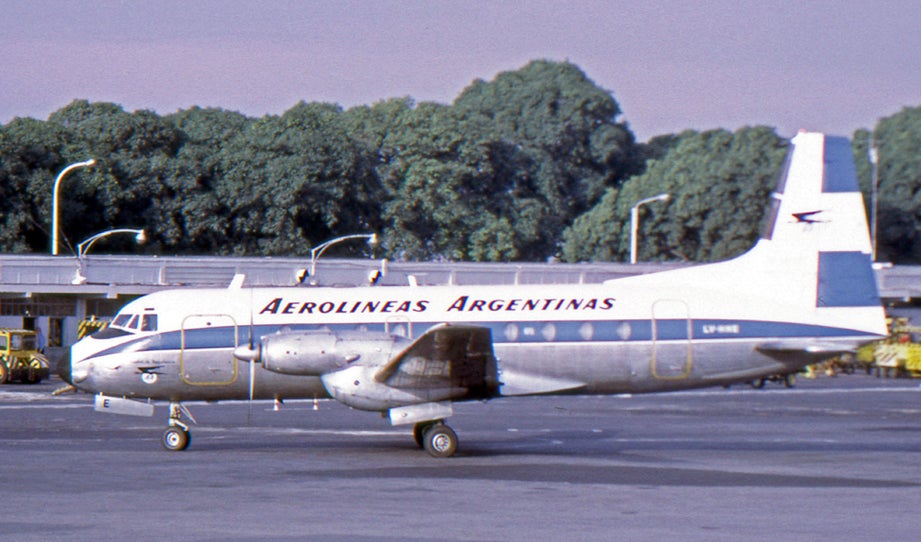
June 24, 1960 – The first flight of the Hawker Siddeley HS 748,
a turboprop-powered airliner originally developed by Avro to replace the
!!!error: Indecipherable SUB-paragraph formatting!!!
. Designed for short takeoff and landing (STOL) and the ability to operated from rough, unpaved airfields, the HS 748 was envisioned as a smaller competitor to the four-engine
!!!error: Indecipherable SUB-paragraph formatting!!!
and was capable of accommodating up to 40 passengers. The two
!!!error: Indecipherable SUB-paragraph formatting!!!
engines gave the HS 748 a cruising speed of 281 mph, and subsequent variants allowed for up to 58 passengers. A total of 380 were produced between 1961-1988, and roughly 20 remain in service today.
(Photo by RuthAS via
!!!error: Indecipherable SUB-paragraph formatting!!!
)
!!! UNKNOWN CONTENT TYPE !!!
Recent Aviation History Posts
!!! UNKNOWN CONTENT TYPE !!!
!!! UNKNOWN CONTENT TYPE !!!
!!! UNKNOWN CONTENT TYPE !!!
!!! UNKNOWN CONTENT TYPE !!!
If you enjoy these Aviation History posts, please let me know in the comments. And if you missed any of the past articles, you can find them all at !!!error: Indecipherable SUB-paragraph formatting!!! .
 RallyWrench
> ttyymmnn
RallyWrench
> ttyymmnn
06/24/2016 at 13:18 |
|
Lots of good stuff this week. My grandpa was in love with the Voyager, he drove down to Edwards to watch it take off and land. I love the Canberra, I still remember the Wings episode when I first learned about it. Wish that show was still around. And that Mars! What an aircraft.
 You can tell a Finn but you can't tell him much
> ttyymmnn
You can tell a Finn but you can't tell him much
> ttyymmnn
06/24/2016 at 13:45 |
|
The Voyager is powered by two different engines. Both were Teledyne Continental engines with a Type O-240 (130 hp) in front and a Type IOL-200 (110 hp) in the rear.
http://airandspace.si.edu/collections/ar…
 facw
> ttyymmnn
facw
> ttyymmnn
06/24/2016 at 14:12 |
|
See if you can spot John McCain:
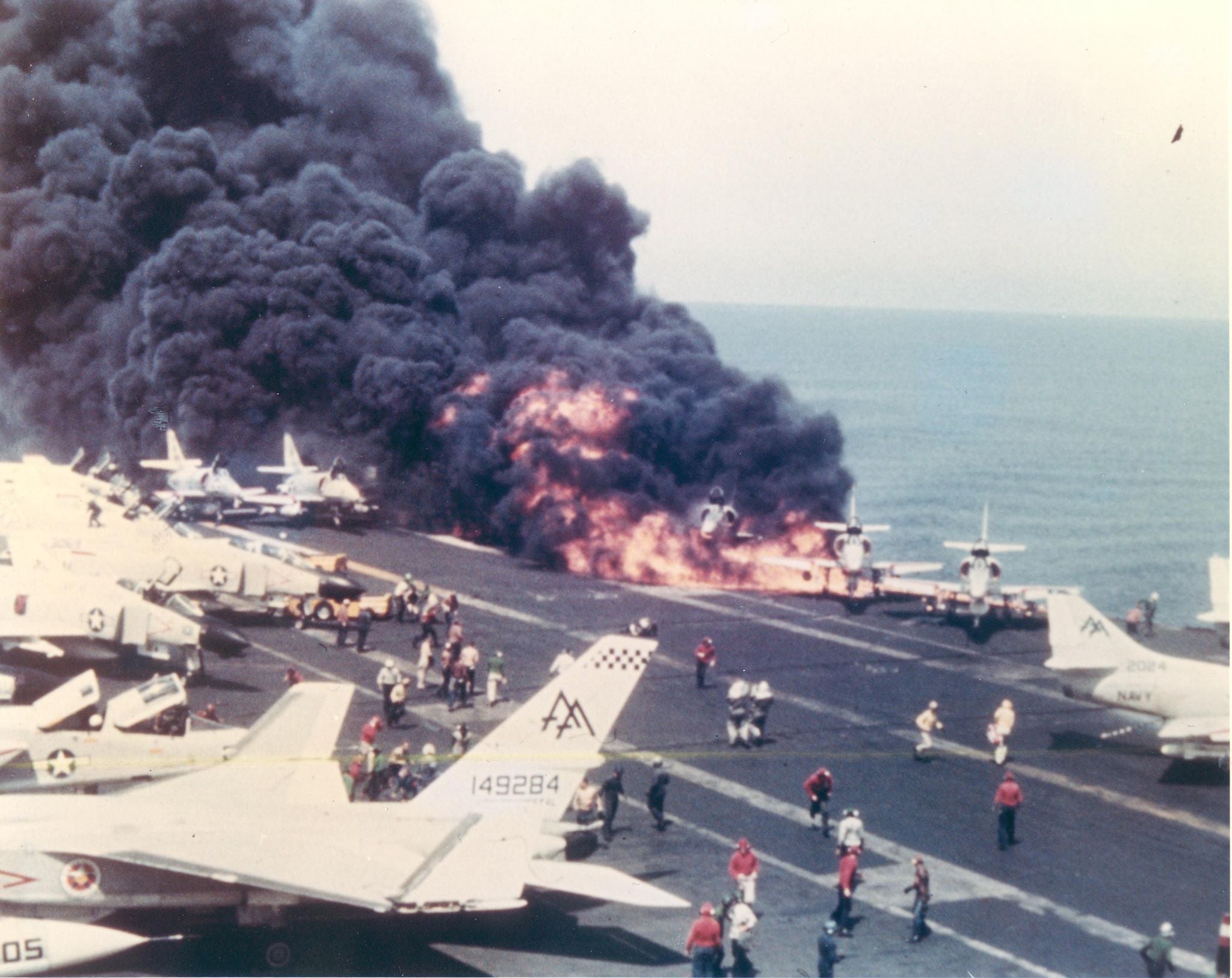
 sunnydaysam
> ttyymmnn
sunnydaysam
> ttyymmnn
06/24/2016 at 16:09 |
|
Thanks for another great post ttyymmnn! I never miss them. Love the Mars, one of the last of a great breed of airplanes. I still don’t understand why the USN or USCG doesn’t have a single flying boat. If you are in trouble out of the short range of helicopters they can only fly over in a jet and wave at you.
 user314
> ttyymmnn
user314
> ttyymmnn
06/24/2016 at 21:34 |
|
It’s kinda odd you see the original clean A-4 when compared to all the lumps and humps a later version like the M picked up:
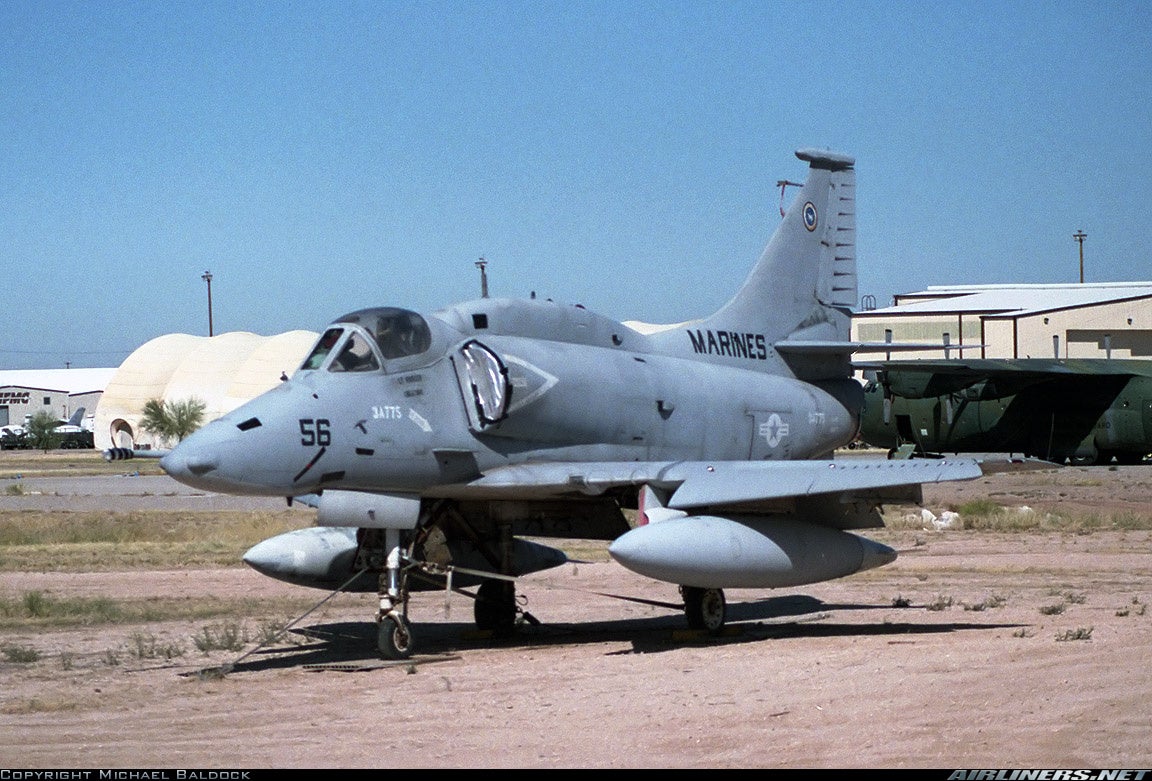
Also, I found this while looking:
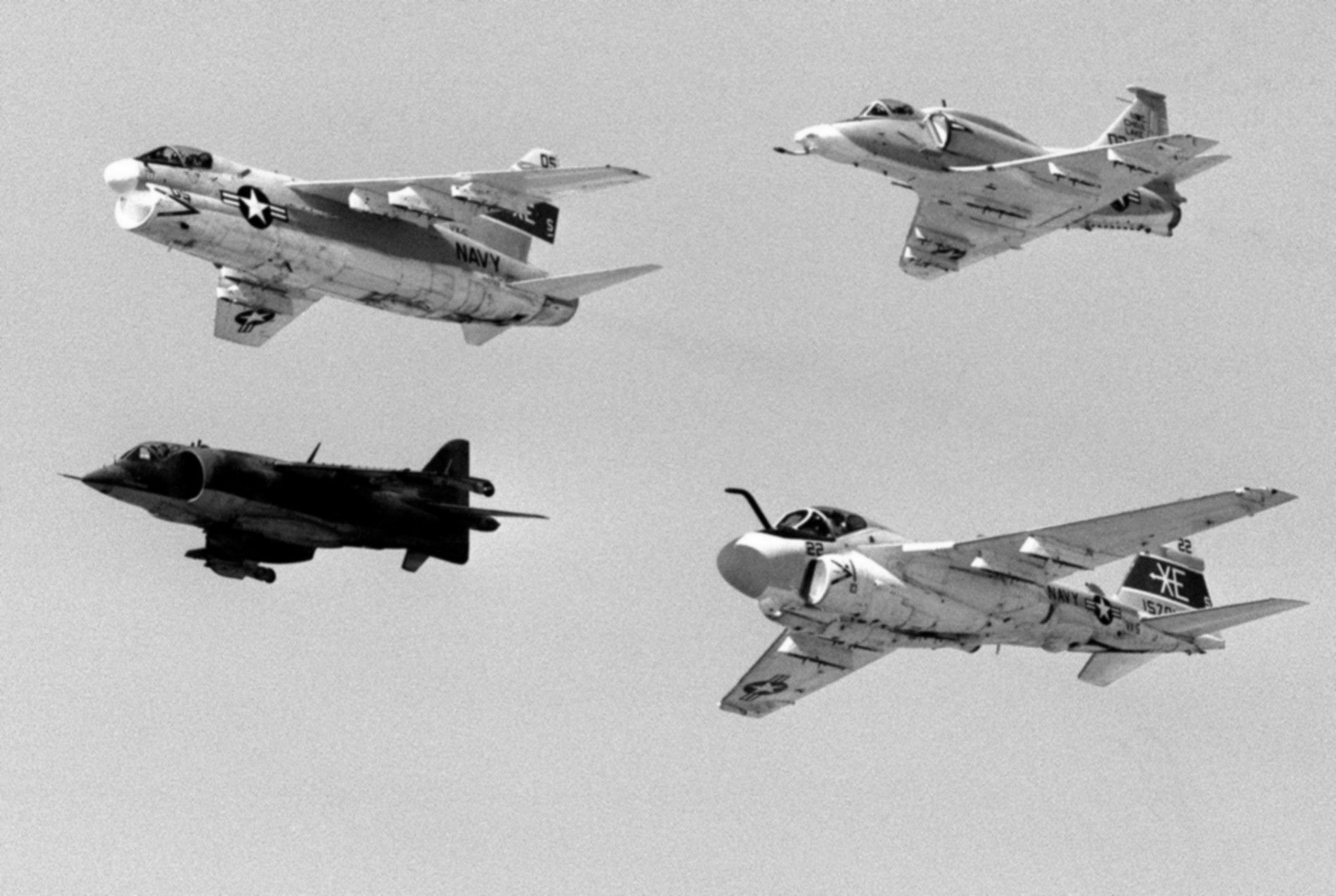
That’s dated 1981. Three of those types are in the Boneyard, and the fourth is on its way out.
 ttyymmnn
> user314
ttyymmnn
> user314
06/24/2016 at 22:24 |
|
That’s an awesome photo. I’m pretty sure all four are retired now, though.
 user314
> ttyymmnn
user314
> ttyymmnn
06/24/2016 at 23:12 |
|
Well, the AV-8As didn’t last long, but the Marines are going to hang onto their B models until 2025, unless the F-35 suffers another setback....
 gmporschenut also a fan of hondas
> sunnydaysam
gmporschenut also a fan of hondas
> sunnydaysam
06/25/2016 at 00:34 |
|
water landing at sea is risky. difficult to judge wave height, and very difficult to get up to speed to take off.
 ttyymmnn
> sunnydaysam
ttyymmnn
> sunnydaysam
06/25/2016 at 12:44 |
|
The CG will fly over you in a C-130 and drop a life raft on your head. But seriously, gmporschenut hit it on the head, I think. Flying boats are really designed for landing on water that isn’t too choppy, like bays, lakes, and protected coastal waters. Waves are normally too high in the open ocean.
 ttyymmnn
> You can tell a Finn but you can't tell him much
ttyymmnn
> You can tell a Finn but you can't tell him much
06/25/2016 at 12:47 |
|
Yup. I missed that. Thanks.
 ttyymmnn
> facw
ttyymmnn
> facw
06/25/2016 at 12:52 |
|
IIRC, his is the Skyhawk on the left, completely in the flames. That was a hell of a mess. I wrote about it in this space last year, and will be updating that story next month when it comes around.
 sunnydaysam
> ttyymmnn
sunnydaysam
> ttyymmnn
06/25/2016 at 14:08 |
|
I disagree, ttyymmnn. The PBY’s in WW2 saved countless sailors, most memorable, the survivors of the Indianapolis.
 ttyymmnn
> sunnydaysam
ttyymmnn
> sunnydaysam
06/25/2016 at 14:16 |
|
Well, you know, sometimes I make stuff up. Thanks for the clarification. You are right.